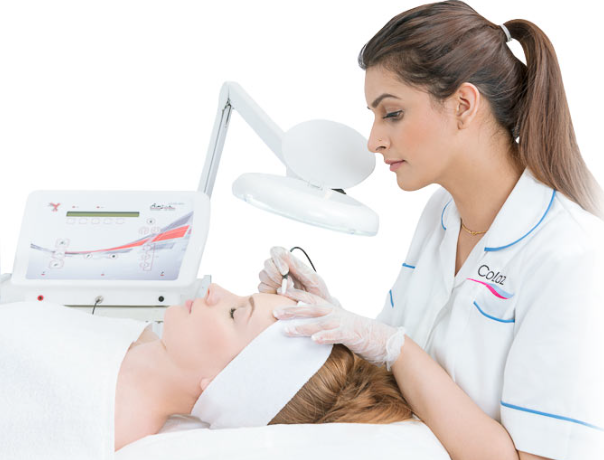DPN Removal IN PERUMBAKAM
Your Trusted Partner in DPN Removal
Dermatosis Papulosa Nigra (DPN) removal is a cosmetic procedure aimed at eliminating benign skin growths that commonly appear on the face and neck, particularly in individuals with darker skin tones. Our team is dedicated to providing top-notch care and guidance to address your concerns and ensure a safe and effective DPN removal experience.

Understanding DPN Removal
What is DPN Removal?
DPN removal refers to the process of eliminating Dermatosis Papulosa Nigra (DPN), which are small, benign skin growths that commonly appear on the face and neck, particularly in individuals with darker skin tones. This procedure involves various methods such as cryotherapy, electrosurgery, laser therapy, or surgical excision to safely and effectively remove DPNs from the skin’s surface. DPN removal is often sought for cosmetic reasons to improve the appearance of the skin or alleviate discomfort caused by these benign lesions.
What are the types of DPN Removal?
DPN removal can be performed using various techniques, including:
- Cryotherapy: Involves freezing the DPNs with liquid nitrogen to destroy the affected tissue.
- Electrosurgery: Uses a high-frequency electrical current to cut or vaporize the DPNs.
- Laser Therapy: Utilizes laser energy to target and remove the DPNs, often with minimal scarring.
- Surgical Excision: Involves physically cutting out the DPNs from the skin using surgical tools.
- Chemical Peels: Involves applying a chemical solution to the skin to exfoliate and remove the DPNs over time.
What happens during these surgeries?
Cryotherapy:
- The dermatologist applies liquid nitrogen to the DPNs using a cotton swab or cryospray.
- The extreme cold temperature freezes the DPNs, causing them to blister and eventually fall off.
- Multiple treatment sessions may be required for complete removal.
Electrosurgery:
- The dermatologist numbs the area with a local anesthetic.
- A small, handheld device with a fine wire loop or needle is used to deliver high-frequency electrical current to the DPNs.
- The electrical energy cuts through or vaporizes the DPNs, effectively removing them from the skin.
- The procedure may produce a slight burning smell but is generally well-tolerated.
Laser Therapy:
- The patient wears protective eyewear to shield their eyes from the laser light.
- The dermatologist directs the laser beam onto the DPNs, targeting them with precision.
- The laser energy heats and destroys the pigment in the DPNs, causing them to disintegrate or fade over time.
- Multiple treatment sessions may be necessary for optimal results.
Surgical Excision:
- The dermatologist numbs the area with a local anesthetic.
- Using sterile surgical instruments, the dermatologist carefully cuts around each DPN to remove it from the skin.
- Any bleeding is controlled, and the wound may be closed with sutures if necessary.
- Aftercare instructions, such as wound care and skincare, are provided to promote proper healing and minimize scarring.
Chemical Peels:
- The dermatologist applies a chemical solution, such as glycolic acid or trichloroacetic acid, to the skin.
- The chemical solution exfoliates the outer layers of the skin, gradually removing the DPNs over several treatment sessions.
- Mild redness, peeling, and temporary discoloration may occur after each peel, but these side effects typically subside within a few days.
What are the benefits?
mproved Aesthetic Appearance: Removal of DPNs can enhance the overall appearance of the skin, especially in areas such as the face, neck, and chest, where they are most commonly found.
Boosted Self-Confidence: Eliminating visible skin lesions can increase self-esteem and confidence, allowing individuals to feel more comfortable and assured in their appearance.
Smoother Skin Texture: DPN removal can result in smoother skin texture, as the raised bumps are no longer present, providing a more even and refined complexion.
Reduced Irritation: DPNs can sometimes become irritated or inflamed, causing discomfort or itching. Removing them can alleviate these symptoms and improve skin comfort.
Enhanced Skincare: After DPN removal, individuals may find it easier to cleanse and moisturize their skin, leading to better skincare practices and overall skin health.
Preventative Measures: Removing DPNs can prevent them from increasing in size or number over time, reducing the need for future treatments and interventions.
Personal Satisfaction: Many individuals experience a sense of satisfaction and relief after undergoing DPN removal, knowing that they have addressed a cosmetic concern and improved their skin’s appearance.
Frequently Asked Question on Alopecia Areata
In some cases, new DPNs may develop over time, especially if the underlying cause is not addressed. However, proper removal techniques can minimize the likelihood of recurrence.
